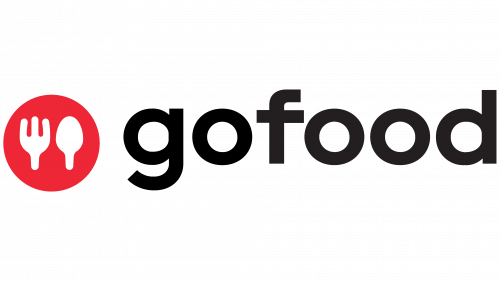“Do you need to have lunch? asks the Gofood logo. “So you’re here.” Attentive service and fast delivery are reflected in the elements of the emblem. Everything on the service pages is clear, understandable, and simple. Designed and pressed the button and received fresh dishes.
Gofood: Brand overview
Gofood is a mobile app launched by the Indonesian corporation Gojek in 2015. The software allows users to order food and groceries. The application’s key advantage over competitors in the market is an intuitive interface that allows users to complete an order in minutes. Today, the Gojek development is used by hundreds of thousands of users every day.
The history of GoFood began in 2015 as part of Gojek, an Indonesian diversified technology company. Gojek was founded by Nadiem Makarim in 2010, initially offering a motorcycle taxi service through a contact center. 2015, the company launched the GoFood mobile app, expanding its services to include food delivery.
GoFood was created to make it easier for Indonesian citizens to order meals. The service was initially launched in Jakarta, Indonesia’s capital, with a limited number of partner eateries. The platform distinguished itself from competitors by focusing on street vendors and small neighborhood businesses rather than large restaurant chains for delivery.
In its first year, the service quickly gained popularity among Gojek users. The wide selection of local dishes and the convenience of ordering through a smartphone app attracted a large customer base. The company actively worked to increase the number of partner restaurants by offering them access to Gojek’s growing user base and a new sales channel.
The platform saw significant growth in 2016. The service expanded to major Indonesian cities like Medan, Surabaya, and Bandung. Along with this expansion, the company recruited new partner restaurants and launched an extensive marketing campaign. They also experimented with various discounts and promotions to boost service usage.
In 2017, the food delivery platform continued its expansion into other Southeast Asian markets. The service was introduced in Vietnam and Thailand after being tailored to local market dynamics and culinary preferences. The company also began partnering with major restaurant chains in Indonesia to expand its offerings and attract new customers.
In 2018, the service launched the GoFood Festival, a series of offline events where customers could sample food from various partners. These festivals became popular to promote the service and support local vendors. That same year, the company began using artificial intelligence to improve its recommendation system and streamline the delivery process.
In 2019, the company introduced GoFood Pickup, a feature that allows customers to order meals through the app and pick them up directly from the restaurant. This feature became particularly popular among office workers looking to avoid lines during lunch breaks. Additionally, the service expanded its reach into smaller cities in Indonesia, helping regional food businesses embrace digital transformation.
The years 2020–2021 were marked by major adjustments and changes for the platform. The service quickly adapted to the new environment by strengthening safety protocols for both customers and couriers and implementing contactless delivery. The company launched programs to support small businesses and help restaurants adapt to the changing market conditions.
In 2022, the platform added new features to enhance user satisfaction. The company also strengthened its position in the food delivery market by introducing its GoMart service as part of the Gojek ecosystem.
By 2023, the company had become one of Southeast Asia’s leading food delivery services. The platform continues to invest in expanding its network, increasing its international reach, and supporting its restaurant partners. The company is also developing the region’s digital economy by helping small and medium-sized food businesses go digital.
The platform has faced many challenges, including intense competition in the food delivery industry, the need to continuously adapt to changing consumer demands, and technological advancements. Despite these challenges, the company has successfully overcome them and has become an essential part of everyday life for millions of people in the region.
Meaning and History
This service has changed its logo only once for a short work time. At the same time, both options are made in a stylish and modern style. Immediately after getting acquainted with the logo, the user planning the application will understand what exactly Gofood does. The author used a red and black palette without overloading the logo with unnecessary elements. The style in which the application’s name and the service’s logo are made allows us to associate GoFood with a modern and progressive project in which youth is perfectly combined with experience and the desire for development.
What is Gofood?
First of all, this application is in one of the most sought-after niches on the market. Using the program’s functionality, you can place an order from many popular establishments.
2016 – 2019
The first variation of the Gofood logo was introduced in 2016. The main inscription is in black letters using bold type. All characters in the title are in capital letters. Moreover, “Go” and “Food” are separated by the application’s logo, which is done in red. It depicts a fork and a spoon parallel to each other (placed vertically). Thus, conciseness and minimalism did not prevent the author from demonstrating what exactly the service specializes in.
2019 – 2022
The new GoFood logo differs from the previous one with a more minimalist approach and smooth lines, making it visually simpler and easier to understand. The fork and spoon remain in the symbol but are now incorporated into a red circle, easily perceived as a plate. This circular element gives the emblem a more streamlined look and symbolizes the main theme—food and delivery.
All the letters in the “gofood” name are now written in lowercase, making the brand name less aggressive and more friendly to the eye. Previously, the capital letters gave it a more formal tone, but now everything looks more “homey,” possibly reflecting the company’s desire to be closer to its audience. The font remains sans-serif, maintaining a modern and clean style.
The placement of the symbol has changed—it is now positioned to the left of the text rather than between the words, creating a more familiar and user-friendly perception. This choice makes the logo more structured and easier to remember.
The red circle remains the main highlight, symbolizing energy, activity, and the desire to act quickly. This is perfect for a food delivery service aiming to promptly meet customer needs. The white color of the symbols (fork and spoon) contrasts with the background, emphasizing the importance of food as the brand’s core element.
The changes in the emblem reflect the company’s desire to be more accessible to a broad audience, making it friendlier and more modern. This rebranding is a logical step to strengthen the user connection and improve their experience.
2022 – today
In 2022, GoFood rebranded as part of Gojek’s new strategy. The main goal of the rebranding was to showcase the company’s commitment to innovation and improving the user experience. Updating the logo was a logical step toward creating a more minimalist and modern image that reflects the service’s dynamism and mobility.
The new GoFood logo represents a step forward compared to previous versions. Previously, the symbol featured a fork and spoon, directly indicating its connection to food delivery, but now the symbol has become more abstract. It looks like a circle with a break at the bottom and an additional element inside, which resembles a head and shoulders or even a figure, possibly symbolizing customer service and closeness to the consumer. This minimalist design makes the emblem more versatile and easily recognizable.
The red circle is kept as the primary color element, symbolizing energy, activity, and movement, perfectly reflecting the essence of a food delivery service. Red is always associated with something dynamic, effectively conveying the idea of speed and efficiency, which is essential for a delivery service.
The font remains sans-serif, giving it a modern and concise appearance. However, there is a noticeable change—the letter “f” in the text has been altered, with the top part appearing slightly cut off. This adds an interesting detail to the simple font, creating uniqueness among similar brands. The change may be linked to the company’s overall aim of appearing fresh and modern, standing out among competitors.
The new logo is more symbolic and versatile than previous versions. It reflects the company’s readiness to deliver food and grow, offering customers new services and opportunities.
Font and Colors
If you look at the 2019 logo, its font is as close as possible to Carmen Sans Extra Bold and Galano Grotesque Semi Bold. All characters in the title are in bold sans-serif.
The author chose a red and black color scheme, in which the name of the Gofood service was black, and the emblem, cutlery, is depicted in red. It is with their help that users should have associations with ordering food. Different color shades for the logo elements made it possible to separate them from each other, thereby clearly indicating the promise of online food orders in today’s realities.









